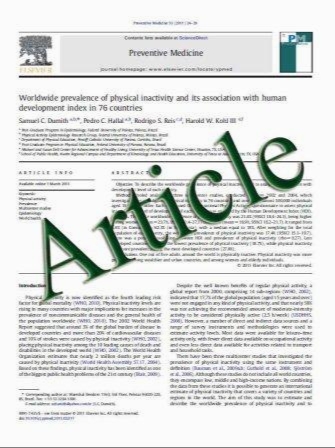Proximal hip geometry and hip fracture risk assessment in a Korean population
- نوع فایل : کتاب
- زبان : انگلیسی
- مؤلف : G. I. Im & M. J. Lim
- چاپ و سال / کشور: 2010
Description
Summary The association between proximal femoral geometry and hip fracture risk were investigated. The risk of intertrochanteric fractures increased 1.64-fold and 2.32-fold with 1standard deviation (sd) increase of hip axis length and neck-shaft angle, respectively, while the risk of femur neck fracture 2.03-fold with 1 sd decrease in femoral head offset. Introduction The purpose of this study was to determine the association between proximal femoral geometry (PFG) and the risk of hip fracture in femur neck (FN) and intertrochanteric (IT) fractures in a Korean population. Methods The study included 151 patients (57 patients with IT fractures, 43 patients with FN fractures, and 51 control patients). Data on BMD, PFG parameters (hip axis length [HAL], neck-shaft angle [NSA], neck length, femoral head offset, neck diameter, shaft diameter (SD), and demographics [age, gender, height, and body weight]) were collected. Descriptive statistics and odds ratios of PFG parameters corrected with demographic variables were obtained using logistic regressions. Results HAL (p=0.046) and NSA (p=0.003) were significantly greater in the patients with IT fracture than in the control patients, while neither parameter was significantly greater in patients with FN fractures than the control patients. The femoral head offset was significantly shorter in the patients with FN fractures (p=0.003) compared with the control patients. In patients with IT fractures, the fracture risk increased 1.64-fold (p=0.048) with a 1 sd increase of the HAL, while it increased 2.32-fold (p=0.003) with a 1 sd increase of the NSA. In FN fractures, the fracture risk increased 2.03-fold (p=0.012) with a 1 sd decrease in femoral head offset. Conclusions Our study showed that some PFG parameters as well as BMD values predict hip fractures in a Korean population, and their evaluation may be useful in the understanding of the biomechanics of hip fractures.
Osteoporos Int (2011) 22:803–807 DOI 10.1007/s00198-010-1301-7 Received: 22 December 2009 / Accepted: 7 April 2010 / Published online: 15 June 2010


